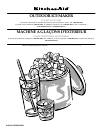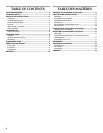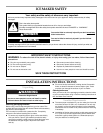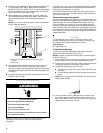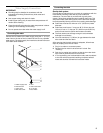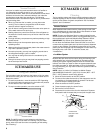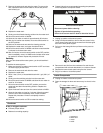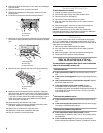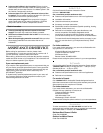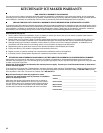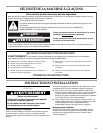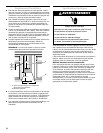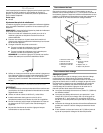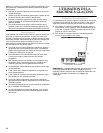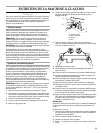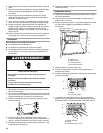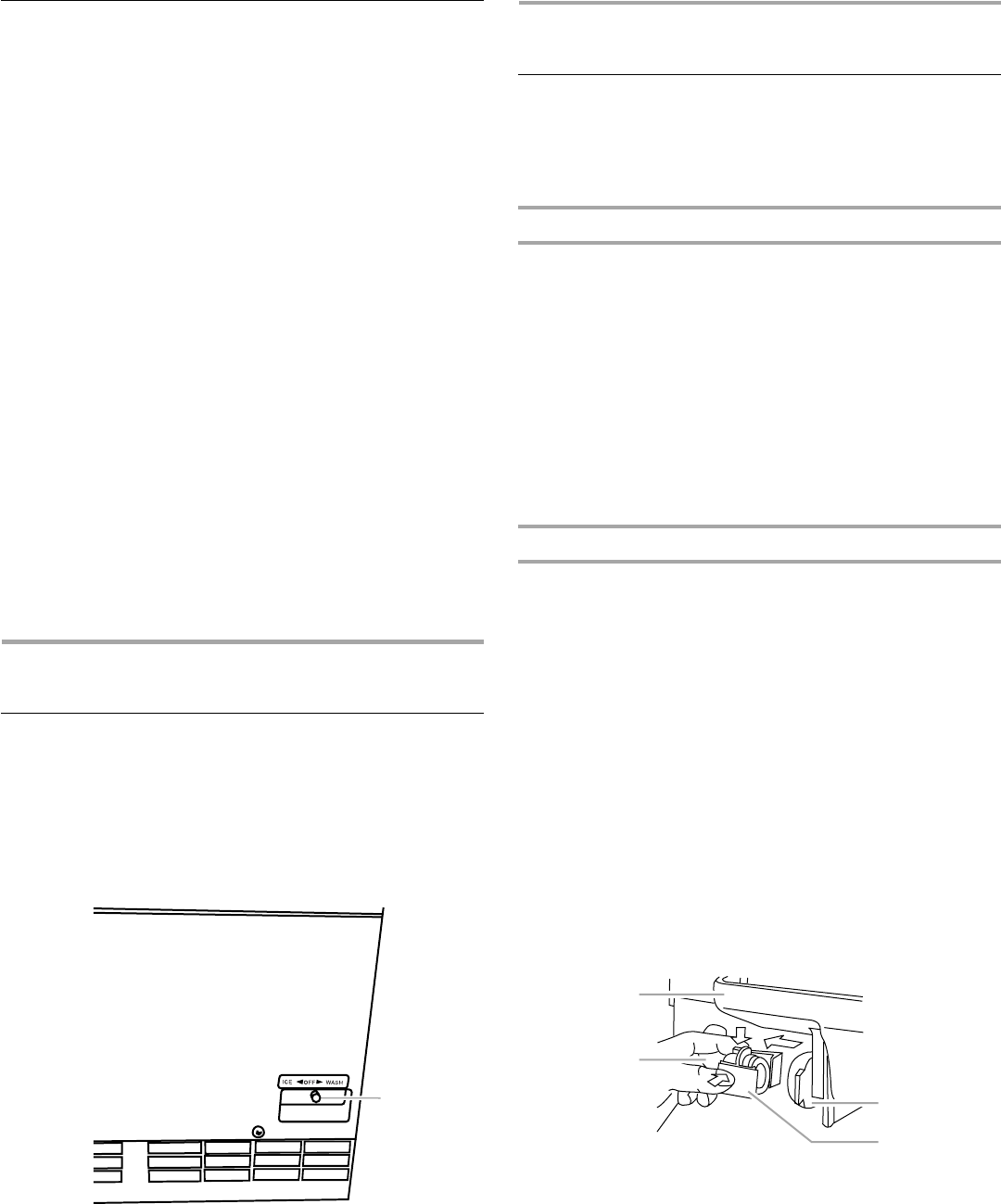
6
Normal Sounds
Your new ice maker may make sounds that are not familiar to
you. Because the sounds are new to you, you might be
concerned about them. Most of the new sounds are normal. Hard
surfaces, such as the floor, walls and cabinets, can make the
sounds seem louder than they actually are. The following
describes the kinds of sounds that might be new to you and what
may be making them.
■ When you first start the ice maker, you may hear water
running. The ice maker is programmed to fill the water
reservoir before it begins to make ice.
■ You will hear a buzzing sound when the water valve opens to
fill the water reservoir for each cycle.
■ Rattling noises may come from the flow of the refrigerant or
the water line. Items stored on top of the ice maker can also
make noises.
■ The high-efficiency compressor may make a pulsating or high
pitched sound.
■ Water running over the evaporator plate may make a
splashing sound.
■ Water running from the evaporator plate to the water reservoir
may make a splashing sound.
■ As each cycle ends, you may hear a gurgling sound due to
the refrigerant flowing in your ice maker.
■ You may hear air being forced over the condenser by the
condenser fan.
■ During the harvest cycle you may hear low popping sounds
as the ice drops into the bin.
ICE MAKER USE
Using the Controls
The ice maker control is located on the bottom of the ice maker
just above the base grille. You must open the ice maker door to
access the control.
1. To start ice production, move the switch to ICE. Depending
on the air and water temperature, the ice maker will produce
the first batch of ice in less than 1 hour.
2. To stop ice maker operation, move the switch to OFF.
NOTE: The WASH setting is used whenever solutions are
circulated through the ice maker for cleaning. Only the water
pump, water valve and fan motor are operating at this setting.
See “Cleaning.”
ICE MAKER CARE
Cleaning
The ice making system and the air cooled condenser need to be
cleaned regularly for the ice maker to operate at peak efficiency
and to prevent failure of system components. See “Ice Maker
System” and “Condenser.”
Exterior Surfaces
Wash stainless steel exteriors with a clean sponge or soft cloth
and a mild detergent in warm water. Do not use abrasive or harsh
cleaners. Dry thoroughly with a soft cloth.
NOTE: To keep your Stainless Steel ice maker looking like new
and to remove minor scuffs or marks, it is suggested that you use
the manufacturer’s approved Stainless Steel Cleaner & Polish.
IMPORTANT: This cleaner is for Stainless Steel parts only!
Do not allow the Stainless Steel Cleaner & Polish to come into
contact with any plastic parts such as the trim pieces, dispenser
covers or door gaskets. If accidental contact does occur, clean
plastic part with a sponge and mild detergent in warm water. Dry
thoroughly with a soft cloth. To order the cleaner, see
“Accessories.”
Ice Maker System
Minerals that are removed from water during the freezing cycle
will eventually form a hard scaly deposit in the water system.
Cleaning the system regularly helps remove the mineral scale
buildup. How often you need to clean the system depends upon
how hard your water is. With hard water of 15 to 20 grains/gal.
(4 to 5 grains/liter), you may need to clean the system as often as
every 6 months.
NOTE: Use 4 oz (148 mL) of Outdoor Ice Maker Cleaner
(part #4396736) mixed with 1 gal (3.78 L) of warm (90°F – 95°F
[32°C – 35°C]) water to remove scaly deposit.
1. Move the control switch to the OFF position.
2. To remove the cubes that remain on the evaporator, turn the
ice machine on for approximately 3 minutes. The harvest
cycle will drop the cubes into the bin.
3. Move the switch to the OFF position.
4. Close the water supply line shutoff valve.
5. Remove the ice from the bin.
6. Disconnect the suction tube from the water tank. Squeeze
both plastic tabs to release the joint and pull the pipe clear.
A. Control switch
OFF
A
A. Water Tank
B. Suction Tube
C. Drain
D. Joint
A
B
C
D



